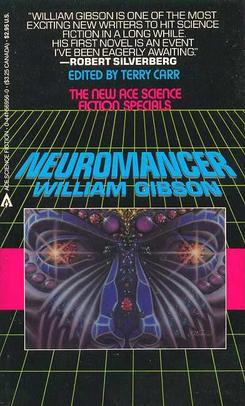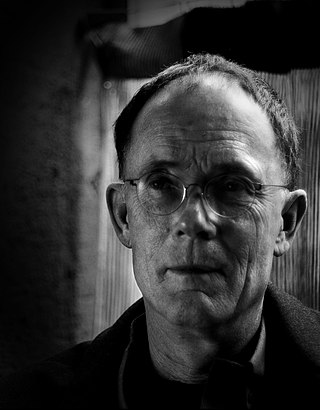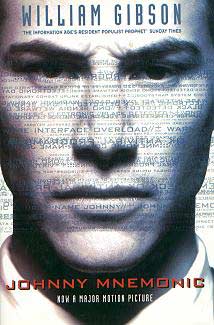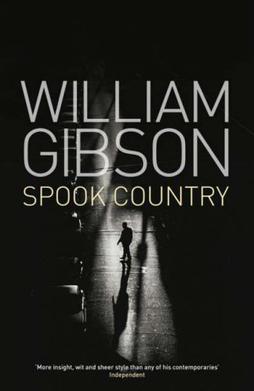Related Research Articles

Neuromancer is a 1984 science fiction novel by American-Canadian writer William Gibson. Considered one of the earliest and best-known works in the cyberpunk genre, it is the only novel to win the Nebula Award, the Philip K. Dick Award, and the Hugo Award. It was Gibson's debut novel and the beginning of the Sprawl trilogy. Set in the future, the novel follows Henry Case, a washed-up hacker hired for one last job, which brings him in contact with a powerful artificial intelligence.

William Ford Gibson is an American-Canadian speculative fiction writer and essayist widely credited with pioneering the science fiction subgenre known as cyberpunk. Beginning his writing career in the late 1970s, his early works were noir, near-future stories that explored the effects of technology, cybernetics, and computer networks on humans—a "combination of lowlife and high tech"—and helped to create an iconography for the information age before the ubiquity of the Internet in the 1990s. Gibson coined the term "cyberspace" for "widespread, interconnected digital technology" in his short story "Burning Chrome" (1982), and later popularized the concept in his acclaimed debut novel Neuromancer (1984). These early works of Gibson's have been credited with "renovating" science fiction literature in the 1980s.

Count Zero is a science fiction novel by American-Canadian writer William Gibson, originally published in 1986. It is the second volume of the Sprawl trilogy, which begins with Neuromancer and concludes with Mona Lisa Overdrive, and is an example of the cyberpunk subgenre.

Mona Lisa Overdrive is a science fiction novel by American-Canadian writer William Gibson, published in 1988. It is the final novel of the cyberpunk Sprawl trilogy, following Neuromancer and Count Zero, taking place eight years after the events of the latter. The novel was nominated for the Nebula Award for Best Novel, the Hugo Award for Best Novel, and the Locus Award for Best Science Fiction Novel in 1989.
The Sprawl trilogy is William Gibson's first set of novels, composed of Neuromancer (1984), Count Zero (1986), and Mona Lisa Overdrive (1988).
Intrusion Countermeasures Electronics (ICE) is a term used in cyberpunk literature to refer to security programs which protect computerized data from being accessed by hackers.

"Johnny Mnemonic" is a science fiction short story by American-Canadian writer William Gibson. It first appeared in Omni magazine in May 1981, and was subsequently included in Burning Chrome, a 1986 collection of Gibson's short fiction. It takes place in the world of Gibson's cyberpunk novels, predating them by some years, and introduces the character Molly Millions, who plays a prominent role in the Sprawl trilogy of novels.
The Bridge trilogy is a series of novels by William Gibson, his second after the successful Sprawl trilogy. The trilogy comprises the novels Virtual Light (1993), Idoru, (1996) and All Tomorrow's Parties (1999). A short story, "Skinner's Room", was originally composed for Visionary San Francisco, a 1990 museum exhibition exploring the future of San Francisco.
"The Belonging Kind" is a science fiction short story by cyberpunk authors William Gibson and John Shirley. It was first published in the horror anthology Shadows 4 edited by Charles L. Grant in 1981, later to be included along with several other stories in Gibson's collection Burning Chrome.
Cayce Pollard is the fictional protagonist of William Gibson's 2003 novel Pattern Recognition.

Neuromancer is an adventure video game developed by Interplay Productions and published by Mediagenic. It was released in 1988 for the Amiga, Apple II, Apple IIGS, Commodore 64, and MS-DOS. It was loosely based on William Gibson's 1984 novel of the same name and set within both the fictional "real world" and the extensively realized and detailed world of cyberspace. It has a soundtrack based on the Devo song "Some Things Never Change" from their album Total Devo. Writer Timothy Leary had sub-contracted the rights to a video game adaptation of the novel, and eventually brought the project to Interplay to develop.

Black/Matrix (ブラックマトリクス) is a series of tactical role-playing games developed by Flight Plan and published by Interchannel. All titles in the series are Japan-exclusive.

The works of William Gibson encompass literature, journalism, acting, recitation, and performance art. Primarily renowned as a novelist and short fiction writer in the cyberpunk milieu, Gibson invented the metaphor of cyberspace in "Burning Chrome" (1982) and emerged from obscurity in 1984 with the publication of his debut novel Neuromancer. Gibson's early short fiction is recognized as cyberpunk's finest work, effectively renovating the science fiction genre which had been hitherto considered widely insignificant.

The Green Knight is the 25th novel by Irish writer and philosopher Iris Murdoch, first published in 1993.
"Burning Chrome" is a science fiction short story by Canadian-American writer William Gibson, first published in Omni in July 1982. Gibson first read the story at a science fiction convention in Denver, Colorado in the autumn of 1981, to an audience of four people, among them Bruce Sterling. It was nominated for a Nebula Award in 1983 and collected with the rest of Gibson's early short fiction in a 1986 volume of the same name.

Spook Country is a 2007 novel by speculative fiction author William Gibson. A political thriller set in contemporary North America, it followed on from the author's previous novel, Pattern Recognition (2003), and was succeeded in 2010 by Zero History, which featured much of the same core cast of characters. The plot comprises the intersecting tales of three protagonists: Hollis Henry, a musician-turned-journalist researching a story on locative art; Tito, a young Cuban-Chinese operative whose family is on occasion in the employ of a renegade ex-CIA agent; and Milgrim, a drug-addled translator held captive by Brown, a strangely authoritarian and secretive man. Themes explored include the ubiquity of locative technology, the eversion of cyberspace and the political climate of the United States in the aftermath of the September 11, 2001 attacks.

Zero History is a novel by William Gibson published in 2010. It concludes the informal trilogy begun by Pattern Recognition (2003) and continued by Spook Country (2007), and features the characters Hollis Henry and Milgrim from the latter novel as its protagonists.

Distrust That Particular Flavor is a collection of non-fiction essays by American author William Gibson, better known for his speculative and science fiction novels.

Bleeding Edge is a novel by American author Thomas Pynchon, published by Penguin Press on September 17, 2013. The novel is a detective story, with its major themes being the September 11 attacks in New York City and the transformation of the world by the Internet.
References
- ↑ Nayar, Pramod (2004). Virtual Worlds. Thousand Oaks: Sage Publications. pp. 118–119. ISBN 0-7619-3229-1.
- ↑ Tom Henthorne (29 July 2011). William Gibson: A Literary Companion. McFarland. pp. 97–99. ISBN 978-0-7864-8693-9.